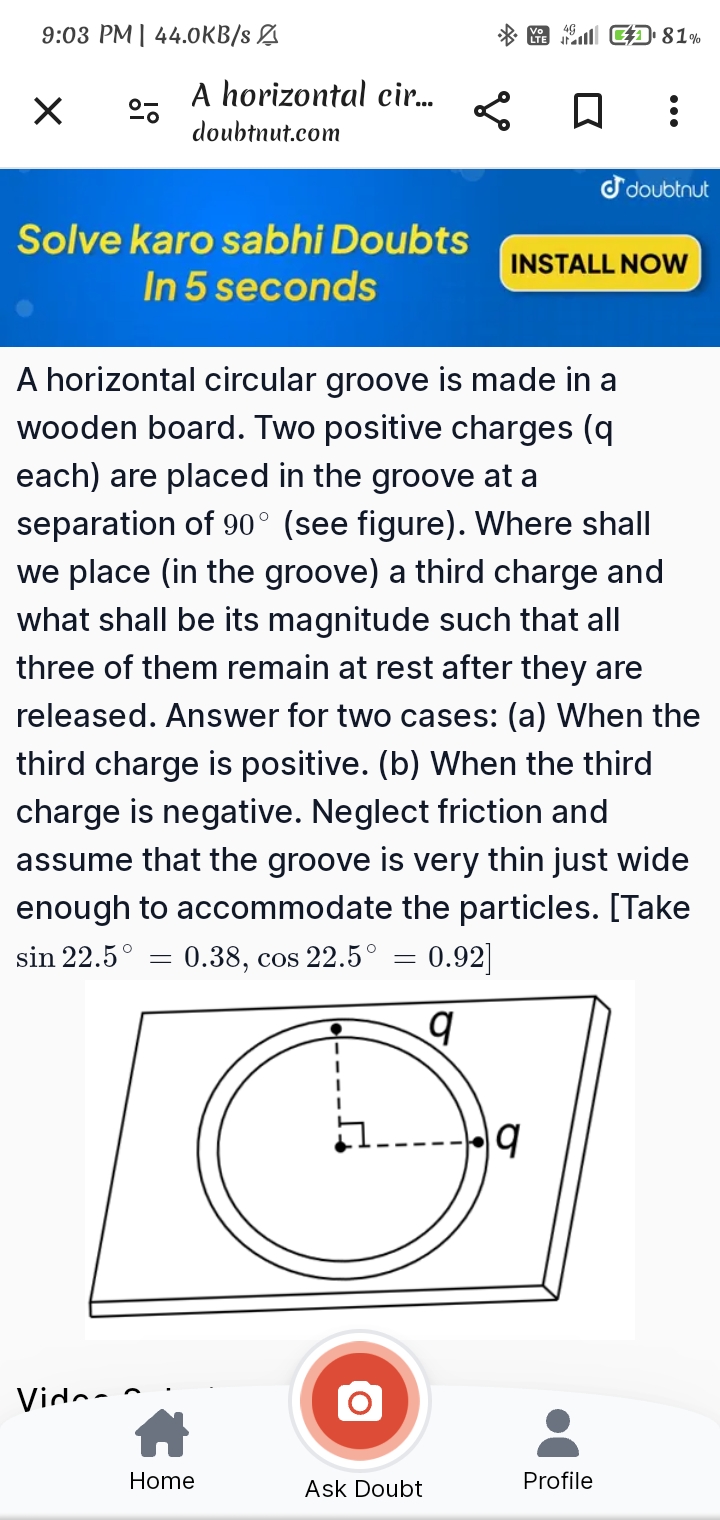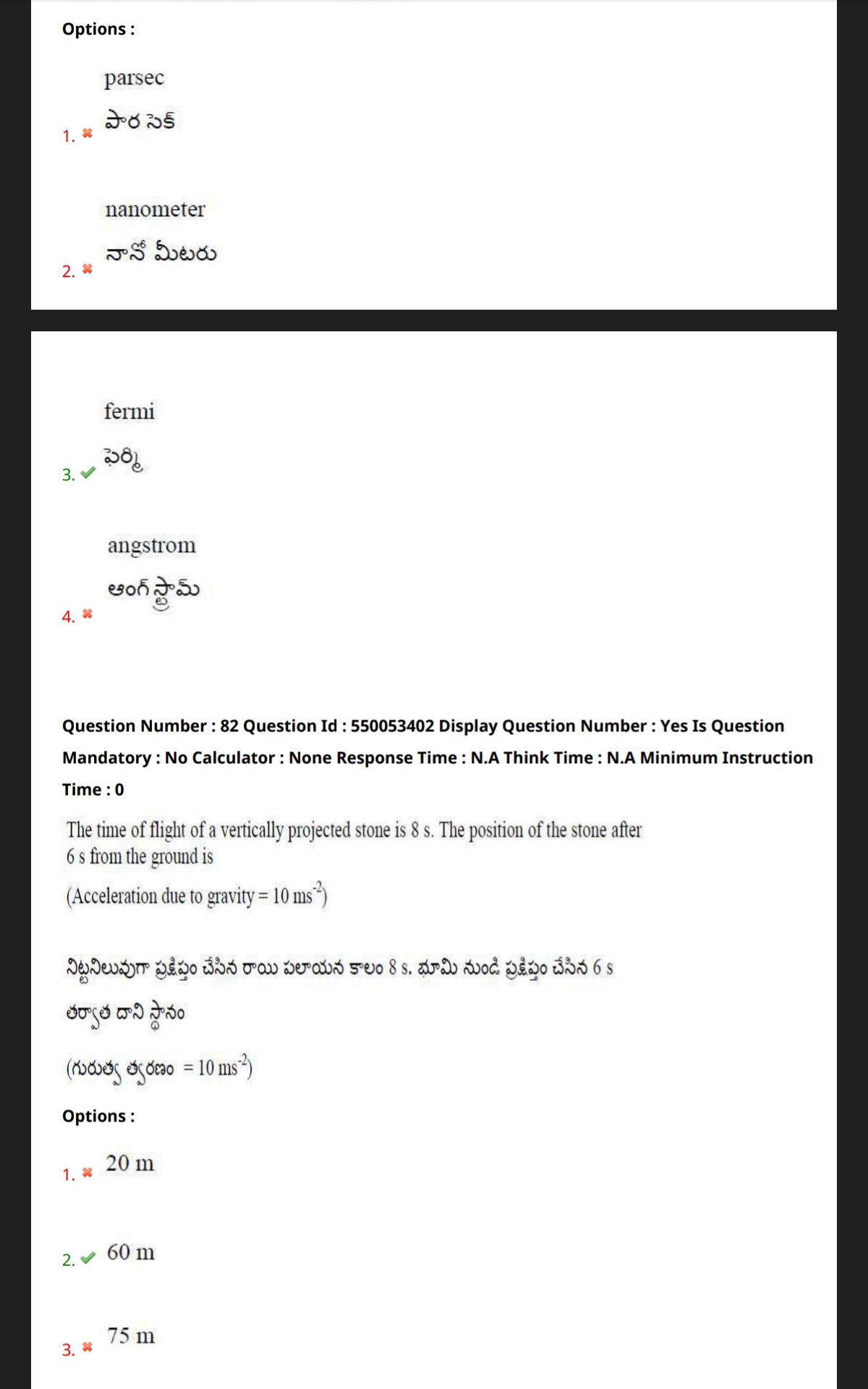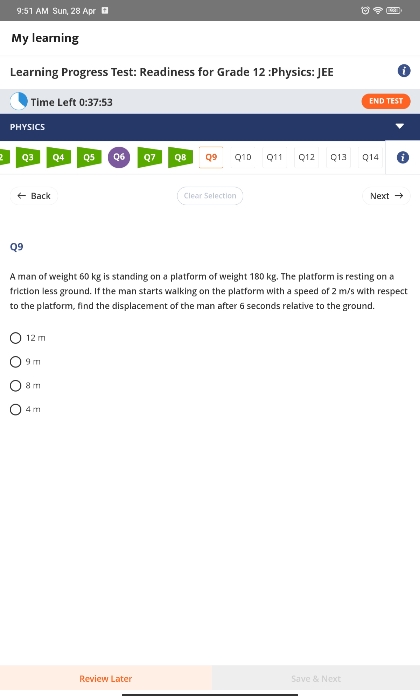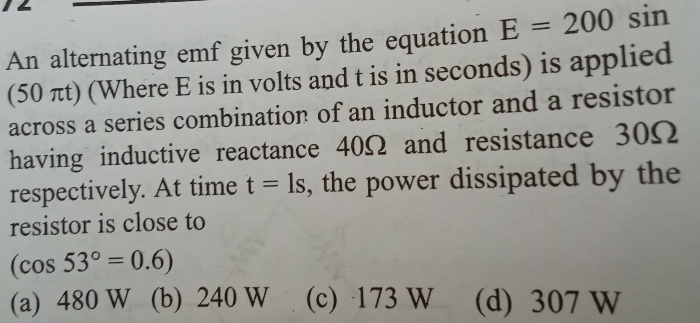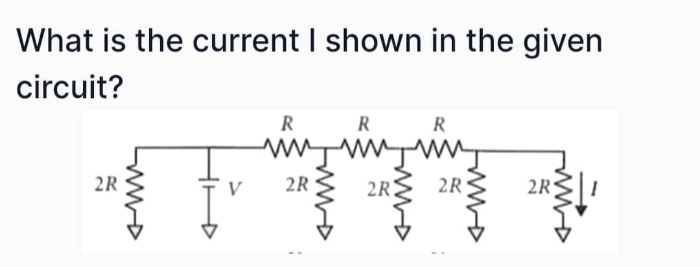JEE Class main Answered
A massive rod of length 1m is placed on a smooth horizontal surface is pulled longitudinally by a force of 10N as shown in figure.
The tension in rod varies as T=10√x.How will linear mass density vary with x?

Asked by mailkunalmunjal | 09 Sep, 2020, 06:19: AM

Let a massive rod of 1 m length is subjected to a force 10 N as shown in figure. Let M be the mass of rod.
Acceleration a of whole rod = Force / mass = ( 10 / M )
let us consider a small mass element dm at a distance x and having width dx.
Tension forces acting at forward and backward direction are shown in figure .
Forward direction tension force , TF = 10 

Backward direction tension force, TB = 10 

By Newton's second law, TF - TB = dm × a
Hence we have ,  ................(1)
................(1)
 ................(1)
................(1)where λ is linear mass density.
After simplification , eqn.(1) can be written as


Hence , λ = ( M/2 ) ( 1 / √x )
Hence linear mass density λ  ( 1 / √x )
( 1 / √x )
 ( 1 / √x )
( 1 / √x )
Answered by Thiyagarajan K | 15 Oct, 2020, 11:47: PM
Application Videos
JEE main - Physics
Asked by sandhyapallapu22 | 03 May, 2024, 04:32: PM
JEE main - Physics
Asked by gamingbadboy085 | 01 May, 2024, 06:28: PM
JEE main - Physics
Asked by bhargavreddynellaballi | 30 Apr, 2024, 08:18: AM
JEE main - Physics
Asked by ravichandraravula66 | 29 Apr, 2024, 11:20: AM
JEE main - Physics
Asked by kmani310507 | 28 Apr, 2024, 04:38: PM
JEE main - Physics
Asked by arivaryakashyap | 23 Apr, 2024, 10:40: AM
JEE main - Physics
Asked by ratnadeep.dmr003 | 21 Apr, 2024, 11:06: PM
JEE main - Physics
Asked by ksahu8511 | 19 Apr, 2024, 11:55: AM
JEE main - Physics
Asked by mohammedimroz | 13 Apr, 2024, 09:48: PM






